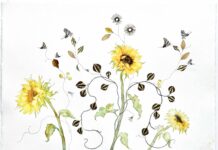The National Gallery, London, might find itself at the center of a lawsuit after it rejected one family’s claim to a “stolen” Henri Matisse portrait of Greta Moll.
Since the end of World War II, the restitution of stolen and looted artworks has been a grueling process that continues to this day. The descendants of Greta Moll, who was the subject of a 1908 portrait by Henri Matisse, are disputing the current ownership of the painting, currently held by the National Gallery, London. The family has argued the portrait was misappropriated in the years following 1947.
The family suggests that Greta and Oskar Moll left Berlin after the war with Wales as their destination. As their only financial asset, Greta sought to ensure the safety of the portrait and avoid an export ban by entrusting it to Gertrud Djamarani, who in turn left it as collateral to dealer Heidi Vollmöller. The work resurfaced in 1979 after the National Gallery acquired it at auction, apparently suggesting that Vollmöller had sold the work years earlier.
With this information in hand, the family formally filed a petition with the museum for the portrait’s return, which was recently denied. Heirs to the Moll family have threatened to file a lawsuit if the painting is not returned. It seems litigation might be unavoidable.
To learn more, visit ArtNet.
This article was featured in Fine Art Today, a weekly e-newsletter from Fine Art Connoisseur magazine. To start receiving Fine Art Today for free, click here.








